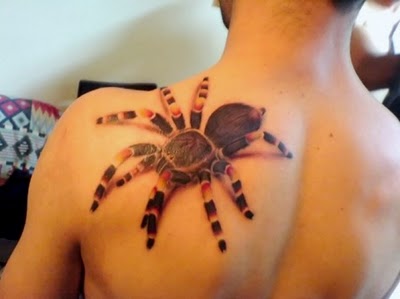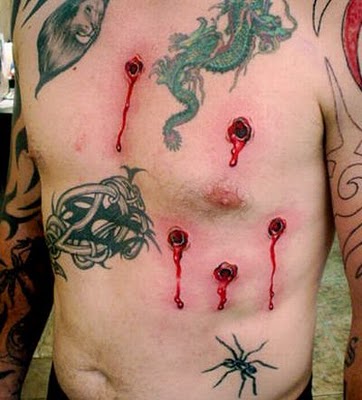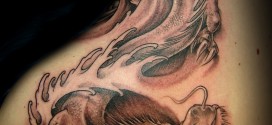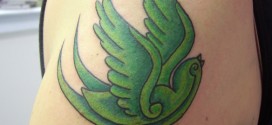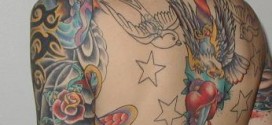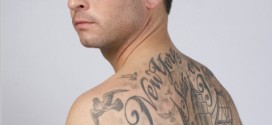Photorealistic Tattoos
“Photorealism”, also known as “photo realism” is an art style that mimics photography. Artists will draw, paint, or in Dmitriy Samohin’s case, tattoo an art work which is a near perfect replica of a photograph. In tattoo art, photorealism is mostly used in portrait tattoos, though it is often applied to animal or insect subjects and biomechanical designs. Dmitriy Samohin’s photorealistic tattoos are among the best, balancing all of the elements of photo realism to create vivid, eye catching body art works.
Lighting is an important part of creating a photorealistic tattoo. Highlights and shadows lend depth to the subject, expressing the 3-dimensional nature of the real world in 2-dimensional space. Tattooing a photorealistic art work is harder than painting or drawing a photorealistic piece. The human body is made up of curves, dips and bulges that can distort a design if the tattoo artist isn’t careful. Tattoo artists also get only one chance to create a perfect piece of art because there is no way to erase a mistake or successfully cover it up without deviating from the original photograph. With many tattoo designs, tattoo artists will leave naked skin in areas where they wish to show a highlight, but with photorealistic tattoos, the artist will use ink that is white or a pastel tone to make the highlights seem truly 3-dimensional.
When creating photorealistic tattoos, the tattoo artist must be careful to copy the dimensions of the subject exactly. Any deviation from the original shape of a person’s face or an animal’s body can change the character of the subject. When creating a photorealistic portrait tattoo, this is especially important, because re-sizing or moving any element of a person’s face can make them look like a totally different person. Photorealistic tatto artists will often photocopy, trace and draw the photograph several times before starting a tattoo, to ensure that they are comfortable with the design.
Photorealistic Tattoos vs Traditional Tattoos
Traditional tattoos are a form of abstract art because they are a highly stylized representation of a subject instead of being an artistic replica of a subject. Tattoos of the early 20th century were often created with larger needles in a limited range of colors. Tattoo artists would outline areas of color to define the shape of the tattoo and create a strong silhouette. The style of traditional tattoos is still incredibly popular a century later, but is currently facing stiff competition in the form of photorealistic tattoos.
Photorealistic tattoos are near exact replicas of a photograph on human skin. With the invention of smaller needles and tattoo machines that can take several needles at a time, photorealism became not just a possibility but an exciting exploration for experimental tattoo artists. Tattoos of photographs were once created in a single color ink, either black or a dark color like blue or brown. The tattoo artist could create a tattoo based on the photograph but was unable to create a replica of the photograph on skin. Modern needles and a wider range of tattoo ink colors mean that tattoo artists can now create a perfect image of a photograph in a tattoo.
While there are many talented tattoo artists out there, not all tattoo artists can pull off a photorealistic tattoo. The artist needs to be incredibly patient, careful and have an exceptional attention to detail in order to recreate a photograph as a tattoo. Dmitriy Samohin is an example of a photorealistic tattoo artist with a high level of skill, evidenced by the pride with which his clients wear his tattoo masterpieces.
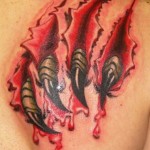 |
 |
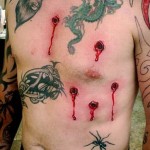 |
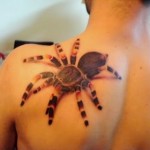 |
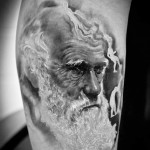 |
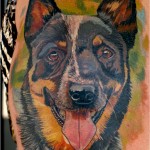 |
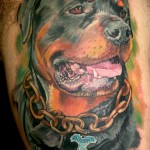 |
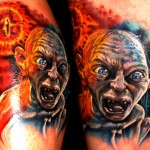 |
 Tattoo Fonts For Women and Women Tattoo Fonts Gallery For Men and Women
Tattoo Fonts For Women and Women Tattoo Fonts Gallery For Men and Women
